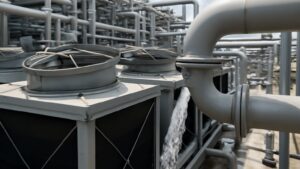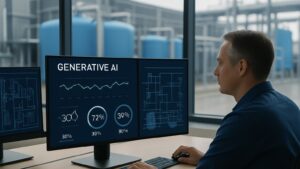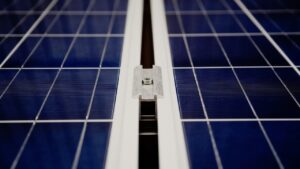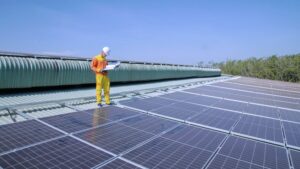How a company uses energy has long been a key issue in reaching net-zero operations. Up until recently, a lot of energy generation came with high carbon costs, forcing a company to compensate for it more. Despite existing for years, renewable energy is slowly gaining recognition as one of the best ways to actually power an operation while simultaneously limiting emissions. The three most common forms are solar, wind, and hydro power, all created with the use of inexhaustible, natural processes.
Why a Net-Zero future needs renewable energy
While climate goals are quite multifaceted, energy use is a key component of getting a company to achieve net-zero emissions. While some companies might opt to reduce energy use in general, a better method would be to simply take energy from renewable sources. This can help ensure that an operation is not disrupted by needing to cut electricity use. Let’s face it, modern businesses, from food and beverages to IT need a lot of energy for a reason. There are methods to increase energy efficiency, but, likely, many companies would prefer to just scale operations upwards, not downwards.
As a result, companies should investigate sources of clean, renewable energy. Unlike traditional alternatives, one advantage of solar, wind, or hydropower is that it can be generated on location, if the company finds that it’s feasible.
Solar
Often the most visually common method, solar power is gathered quite simply, by harnessing the rays of the sun to generate electricity. There are a few limitations, firstly, depending on where one’s operations are situated, there simply might not be enough sun to make it worthwhile. Or, at the very least, it could require significantly more panels compared to a similar operation in a sunnier area. The panels themselves have to be installed and maintained, creating a “buy-in” cost that companies need to deal with. On the other hand, as solar power generation is taking off, the costs are steadily decreasing. Since 2012, the cost of installing solar panels in some areas has been lower than the cost of energy over that period. Most business owners have already felt the increase in electricity costs recently, with no clear end in sight.
Wind
Similarly inexhaustible, as long as the earth itself is habitable, wind power comes from the rotation of turbines. Similar to solar power, it’s geographically limited, as wind is not consistent and not disturbed equally across the globe. It has a greater cost of adoption, as turbines are larger, require more in-depth maintenance, and are audibly and visually more disruptive. However, they work perfectly in more remote areas. These plots of land tend to be exposed to more wind and the disruptive elements of the turbine are less noticeable. Wind energy is also quite efficient, once the system is up and running while being simultaneously fully green and sustainable.
Hydro
Last but not least, hydro energy comes from moving water turning turbines to generate electricity. Hydro power is quite old already, as the water wheels around the world attest to. Like the wind and sun, it’s relatively inexhaustible, unless there is major environmental disruption. It’s also quite cost-effective. On the other hand, it’s the most limited by geography and requires sufficient moving water. Dams can simulate this, but cause their own environmental issues as areas end up flooded.
However, the impoundment of water does also create new jobs, keeps water levels stable, and creates a limited biosphere for aquatic creatures and plants. It is also quite consistent compared to wind and solar, and dams can adjust their slices to generate more or less energy as needed.
What is the future of Net-Zero?
Decarbonization will require companies to understand how to limit emissions across their entire supply chain. This, simply put, extends to energy. While one route would be to limit energy consumption, a preferable alternative could be to simply use energy from sustainable sources. Many places already have providers that utilize solar, wind, or hydro power, or possibly a combination of the three. A truly forward-thinking business should investigate producing its own technology and learning from companies that already do.
The Global Summit on Scope 3 Emissions Reduction will bring together key industry experts to learn more about reporting strategies & carbon data management in a small-scale, industry-driven event, on 20-21st April 2023 in Amsterdam, the Netherlands. The two-day, hybrid event features in-depth case studies of supply chain transformation, carbon accounting, and networking breaks dedicated to exchanging insights and expertise on tackling Scope 3 emissions. Visit future-bridge.eu and netzero-events.com or follow us on our social media to track other energy use and decarbonization events.





